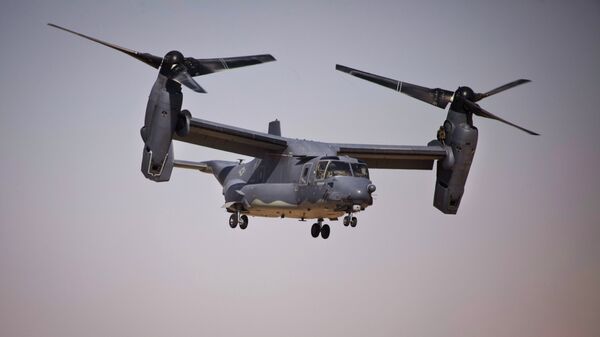According to the redacted report, the vacuum filtration system - known as the Engine Air Particle Separators (EAPS) - did not meet previous redesign guidelines set by the manufacturer, Rolls-Royce, and will require yet another redesign effort. The EAPS was previously redesigned twice: once in 2010 and again in 2011.
The Marine Corps’ MV-22 and the Air Force’s CV-22s both have Rolls-Royce T406 engines.
"When the [V-22 program manager] developed the specification for the original EAPS design, it did not require the EAPS to meet the Rolls‑Royce specification in all desert environments," the report reads.
"The third EAPS redesign is intended to remove more soil from the air flowing into the V‑22 engine than the original EAPS; however, the soil ingested into the engine would be four times greater than the engine manufacturer’s specification allows," the report’s executive summary reads.
However, the report does not appear optimistic about a successful redesign.
“V‑22 remains at risk despite more than nine years of EAPS redesign attempts. Additionally, the PMA‑275 cannot be certain that the third EAPS redesign will correct long‑standing problems with the V‑22,” the report notes.
According to Military.com, debris building up in Osprey engines has already been associated with a deadly aviation incident.
An MV-22B Osprey crashed in Hawaii back in 2015, killing two people and injuring more than 20 others. A Marine Corps investigation at the time found that the pilots tried to land the aircraft despite being exposed to high amounts of debris, which can severely decrease visibility.
"Repeated, sustained flight time in brownout conditions ... while attempting to land caused the left engine to stall, resulting in a loss of power that placed the aircraft in an unavoidable freefall to the ground," a Marine Corps news release regarding the incident at the time reads.
The incident resulted in a guideline change: the maximum time that Ospreys can remain inside dust clouds was reduced from 60 to 35 seconds, The Drive reported.




